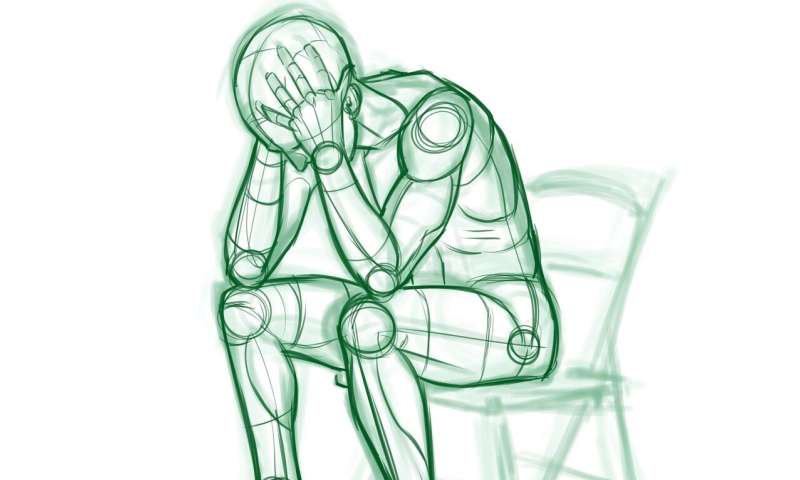
Patients with peripheral artery disease (PAD) and depressive symptoms experience worse recovery especially women, compared to counterparts without depressive symptoms, one year after receiving specialty care for PAD, according to new research published today in the Journal of the American Heart Association, an open access journal of the American Heart Association.
PAD is a narrowing of the peripheral arteries serving the legs, stomach, arms and head, and most commonly affects arteries in the legs. PAD is associated with a high risk of death and illness from cardiovascular diseases and is a significant global health problem that may cause excruciating pain while walking and may impact mobility, functioning, health status and quality of life.
“This is the first study to document how depressive symptoms may complicate PAD recovery even among patients receiving specialty care,” said senior study author Kim G. Smolderen, Ph.D., FAHA, a clinical health psychologist and co-director of the Vascular Medicine Outcomes Research Program in the internal medicine department at Yale New Haven Hospital, Yale University School of Medicine in New Haven, Connecticut.
For one year, researchers followed 1,243 patients treated at vascular specialty clinics in the U.S., the Netherlands and Australia who were being treated for new or recurrent symptoms of PAD. Patients included in the study (average age 67, 38% women) were enrolled from the Patient-centered Outcomes Related to Treatment Practices in Peripheral Artery Disease Investigating Trajectories (PORTRAIT) Registry. The international registry addresses gaps in knowledge about the quality of care and health outcomes of patients with PAD, especially as seen from the patients’ perspectives.
Researchers assessed depressive symptoms at the beginning of the study using the standard 8-item Patient Health Questionnaire (PHQ-8). Patients rated statements about how often they:
- have “little interest or pleasure in doing things;”
- feel “down, depressed or hopeless;”
- have “trouble sleeping;”
- feel “tired/no energy,”
- have “poor appetite or overeat;”
- feel “bad about yourself;” or
- believe they are “moving or speaking so slowly that other people notice/or the opposite, being so fidgety or restless that they have to move around a lot more than usual.”
Disease-specific and general health status were measured at the beginning of the study and at three, six and 12 months later with standardized patient interviews.
The researchers then reconstructed the one-year health status trajectory by whether or not patients reported depressive symptoms when they were diagnosed with PAD. The analysis found:
- Men and women with depressive symptoms had worse health status at each time point, compared to patients who did not report such symptoms.
- More women than men, had depressive symptoms, 21.1% vs. 12.9%, respectively.
- One in five women with a new diagnosis or worsening symptoms of PAD may have clinically relevant depressive symptoms one year after diagnosis, approximately two times higher than men. The women experienced worse health status outcomes that are partially explained by depressive symptoms.
“A major goal of PAD treatment is improving patients’ health status and quality of life,” said study first author Qurat-Ul-Ain Jelani, M.D., an interventional cardiologist in training at Yale University School of Medicine. “Not recognizing or treating depressive symptoms may stand in the way of realizing optimal recovery.
“As more value-based care options are designed for patients with PAD, integrating mental health screening and treatment pathways into chronic disease management may increase the opportunity for patients to receive more holistic care, thus improving outcomes. A multidisciplinary approach that includes mental health supports for patients with PAD would be beneficial.”
Because the study was focused on patients treated at vascular specialty clinics, the findings may not be representative of the general PAD population who may not have access to specialty care. Researchers also acknowledged that the emphasis on depressive symptoms excludes many mental health concerns, such as anxiety or stress, and also excludes unmeasured clinical factors that could contribute to depressive symptoms.
Source: Read Full Article
